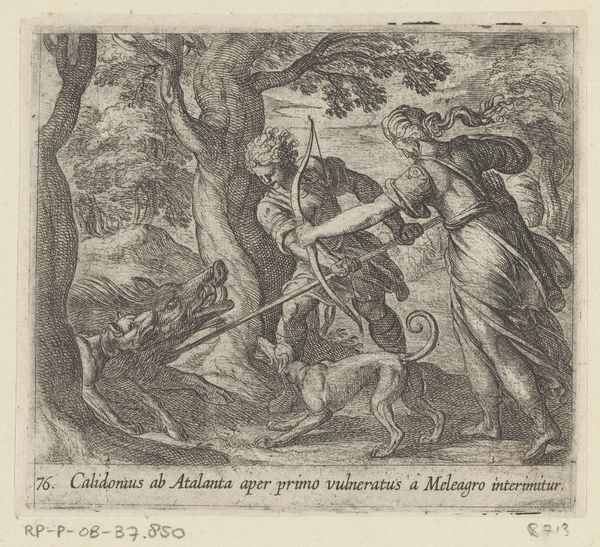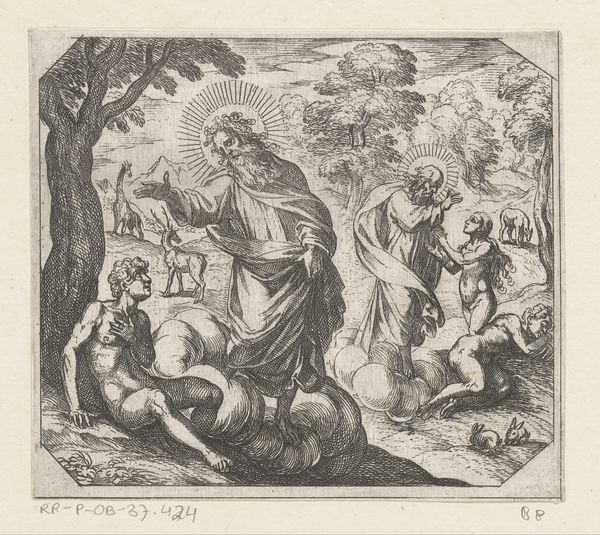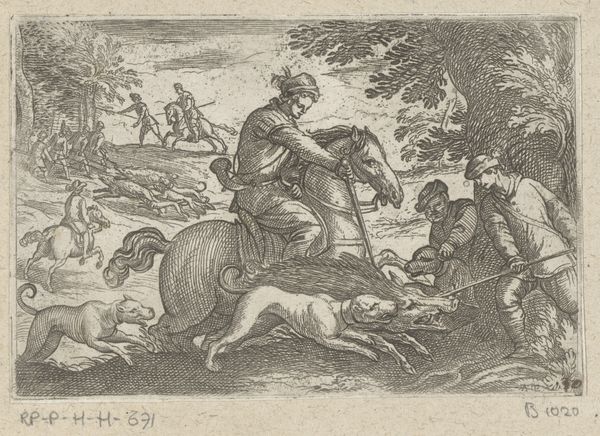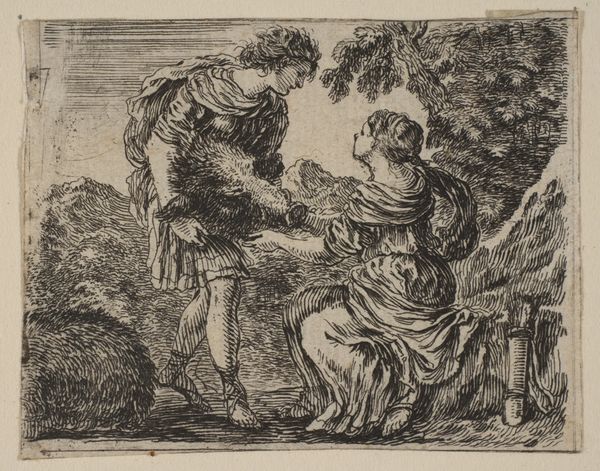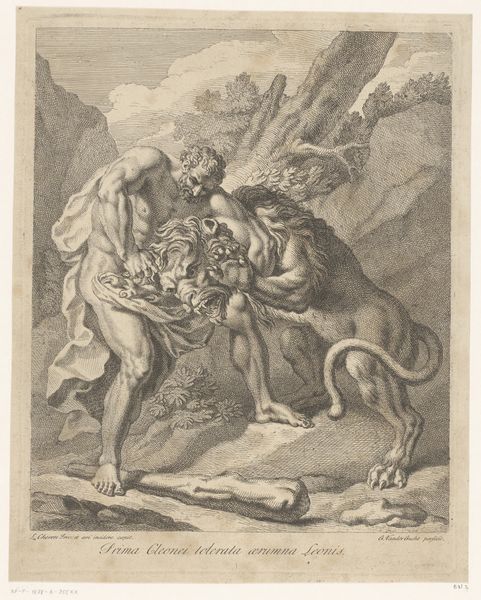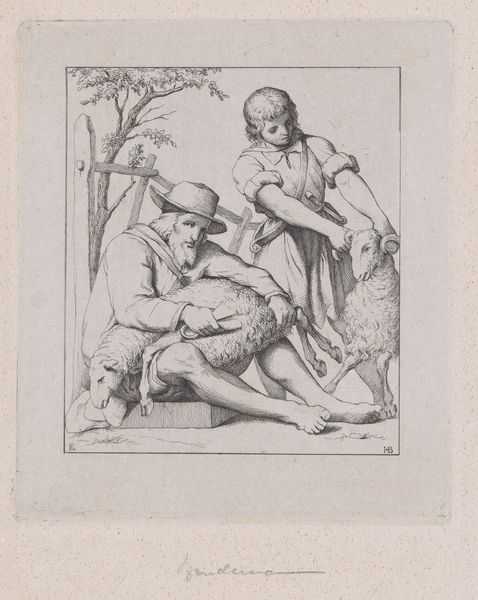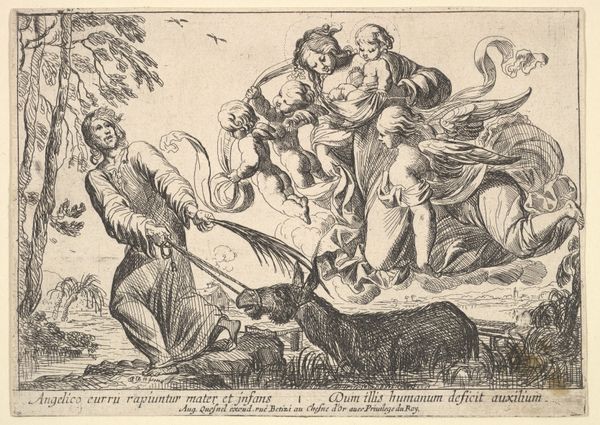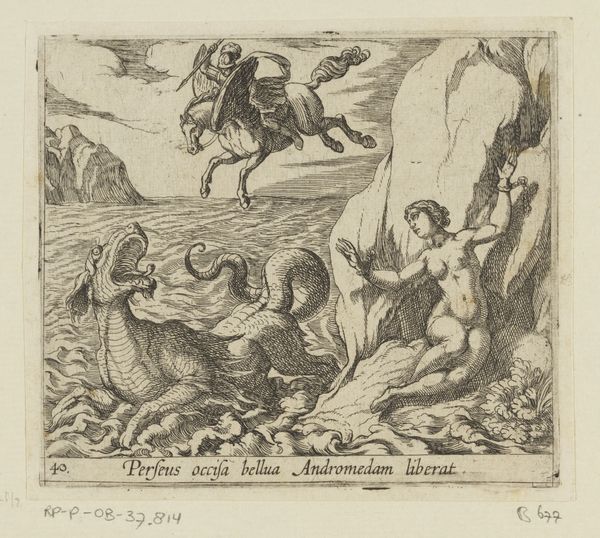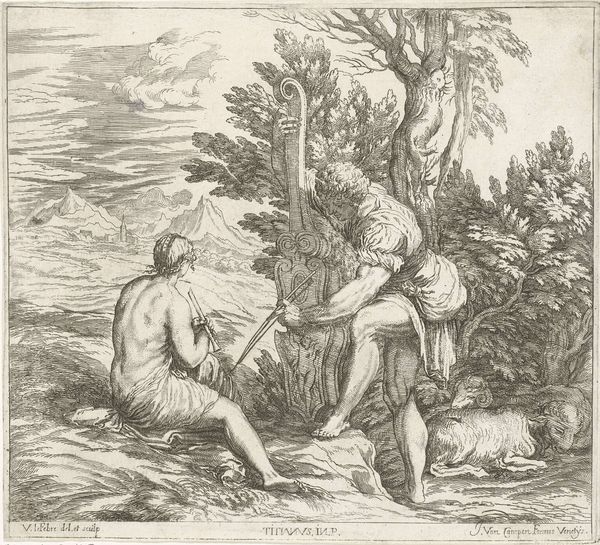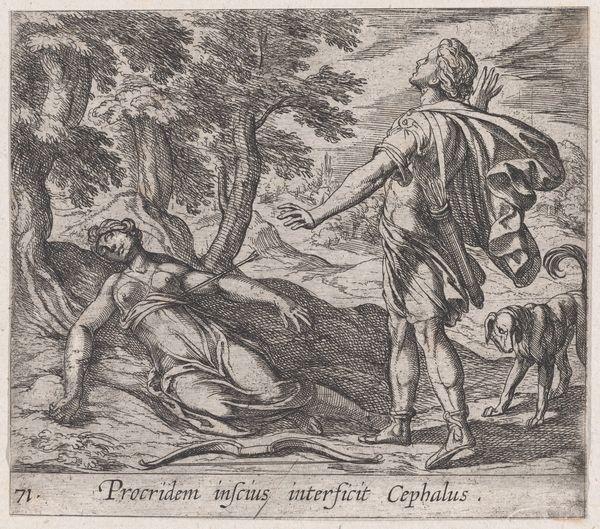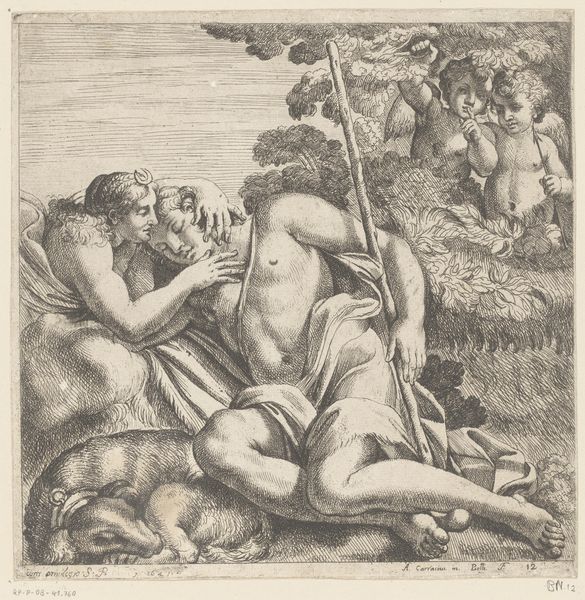
drawing, ink, engraving
#
drawing
#
mannerism
#
figuration
#
ink
#
history-painting
#
engraving
Dimensions: height 104 mm, width 117 mm
Copyright: Rijks Museum: Open Domain
Antonio Tempesta made this engraving, *Meleager offers Atalanta the head of the boar*, in the late 16th or early 17th century. It presents a scene from classical mythology, reflecting the Renaissance fascination with ancient stories and values. But, like any image, it creates meaning through visual codes tied to its time and place – in this case, Italy. We might consider the role of the Church and how the rediscovery of classical antiquity influenced artistic production. Tempesta’s print demonstrates how artists were looking to the past to express contemporary ideas about heroism, gender, and power. The institutions of art – academies, patronage systems – played a vital role in shaping these themes. Was Tempesta making a statement, conservative or progressive, about the social structures of his time? As historians, we delve into such questions, using resources from the period to understand the social and institutional contexts that shaped the art and the way audiences then might have viewed it. The meaning of art is contingent on those contexts, inviting endless interpretations across time.
Comments
No comments
Be the first to comment and join the conversation on the ultimate creative platform.

